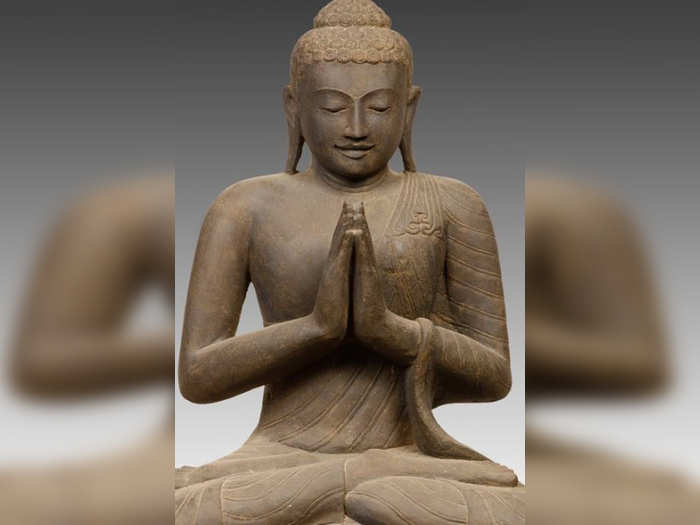NAMASKAR A IMPORTANT GESTURE
Namaste is a Sanskrit word for a respectful salutation performed by joining two palms together.
Namaste means “I bow before you” or “the God who dwells in me salutes the God who dwells in you.”
Namaste is a gesture of reverence, gratitude, and respect toward another.
According to Indian, Nepalese, and Buddhist cultures, Namaste shows respect and goodwill towards the other. This gesture is used in everyday life when saying hello or goodbye, during worship, in prayers, and spiritual practices. It is also an expression of one of the most commonly used mudras in Hatha Yoga.
Namaste is a combination of “Namah” + “Te.” Thus, the word Namah takes the form of Sandhi. It is the combination of “Namah” – ‘bow, worship, reverence,’ ‘greeting with a bow’ and ‘te’- a pronoun in the second person and dative case: ‘you.’
There is another version of the Namaste translation: “not for me, but for you” this message reflects the main essence of Karma Yoga as selfless service, when an act is performed for the benefit of others, without selfish motivation.
Namaste is equivalent to “Namu” in the Buddhist “Namu Amida Butsu.” In addition, this “Nanmu” means “Kie” in the Buddhist language, which means to believe in God, Buddha, and high priests and rely on them physically and mentally. The idea that everyone has a god in humans means giving thanks and salutes to the god who is in each human being.
The term Namaskar not only opens the way for one soul to meet another but it also signifies the union of two energies. According to scholars of Spirituality, a person’s right hand is more linked to faith, while the left hand is more linked to thought. By joining the two hands, these two forces unite.
In Yoga, namaste also symbolizes the union of Sun and Moon energy. When you bring your palms together to perform, two vital energy unites and make you surrender to the divine. When you do namaste, you express “the divine in me bows” or “I bow to the divine.”
This word represents the idea that we are all one: we have many more similarities than differences. According to tantric philosophy – which looks to the human body as a means of attaining knowledge – each person, thought, feeling, or experience is a perfect expression of divine consciousness.
When we remember who we are through this spiritual practice, we understand that there are no barriers between ourselves and others. We are all part of the whole.
The Sanskrit terms Namaste and Namaskar have a similar meaning referring to the expression of respect and reverence, accompanied by a gesture of folded hands. They are based on one word, “Namah, which means ‘worship, reverence.’ It is an expression of admiration and entrustment of oneself, trust, and self-surrender concerning the divine light source in each of us.
Thus, Namaste, which means “a respectful greeting to you,” consists of the words “Namah” and “te” (to you), as mentioned above. Namaskar, meaning “I bow with respect” or “I bow with respect to you, which is a manifestation of the divine essence,” consists of “Namah” and “kar” (kar – ‘do,’ ‘follow,’ ‘perform,’ ‘form’).In the modern world, both words are used interchangeably, meaning a manifestation of respect for the divine principle in the other. However, it is believed that initially, when saying “Namaste,” they addressed a deity or a saint. At the same time, “Namaskar” was used only for people who are one of the manifestations of single divine essence. It is not worshiping another person’s ego but reverence for a particle of the Higher Consciousness in him.

